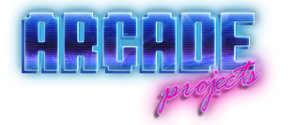Pr3tty F1y
Student
So I popped open my Japan-region Bubble Memories cartridge and got a bit of a surprise:

The cartridge always struck me as a bit weird as the label on top is too wide for the plastic indentation.
I was expecting a more traditional board layout, but this thing looks to be all 27C4001 512kb chips (except for the sound EPROMs which are 27C2001's). I already slapped stickers over the EPROM windows, so no fretting there. However, the Taito security sticker was intact on the on the center screw of the cartridge before opening it (although that doesn't mean someone crafty didn't get in there).
Any thoughts on what this is? Am I wrong and this is what I should have expected?
It looks like the only sets in MAME that have 512kb roms are the prototypes. I'm not thinking that this actually is a prototype. Just maybe the same rom data split over different chips. However, I'll be dumping it to make sure.
I guess this gets around my question about how I was planning to do a Twin Qix conversion. Apparently, given everything is socketed, it will be a bit easier than anticipated.
The cartridge always struck me as a bit weird as the label on top is too wide for the plastic indentation.
I was expecting a more traditional board layout, but this thing looks to be all 27C4001 512kb chips (except for the sound EPROMs which are 27C2001's). I already slapped stickers over the EPROM windows, so no fretting there. However, the Taito security sticker was intact on the on the center screw of the cartridge before opening it (although that doesn't mean someone crafty didn't get in there).
Any thoughts on what this is? Am I wrong and this is what I should have expected?
It looks like the only sets in MAME that have 512kb roms are the prototypes. I'm not thinking that this actually is a prototype. Just maybe the same rom data split over different chips. However, I'll be dumping it to make sure.
I guess this gets around my question about how I was planning to do a Twin Qix conversion. Apparently, given everything is socketed, it will be a bit easier than anticipated.
Last edited:

 ).
).